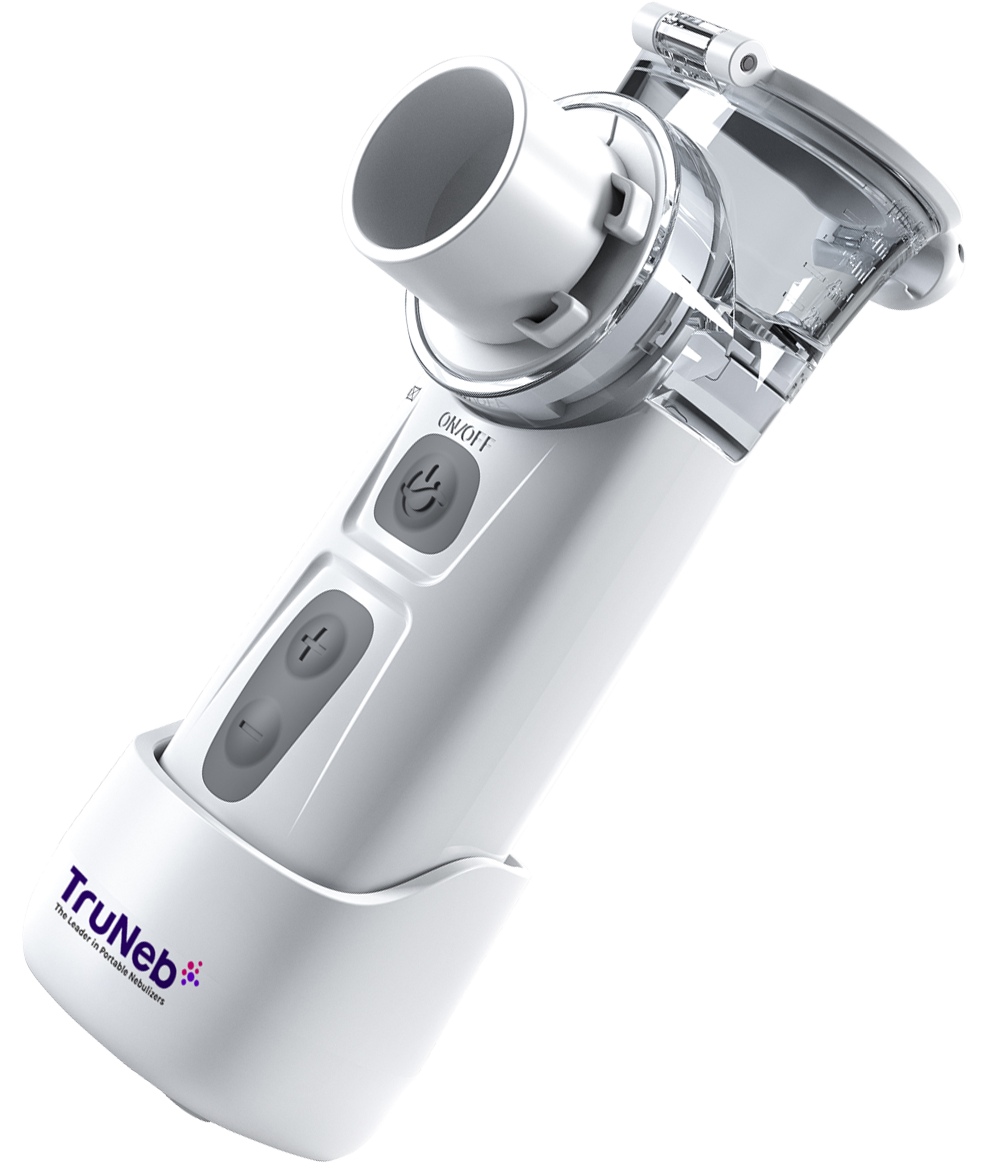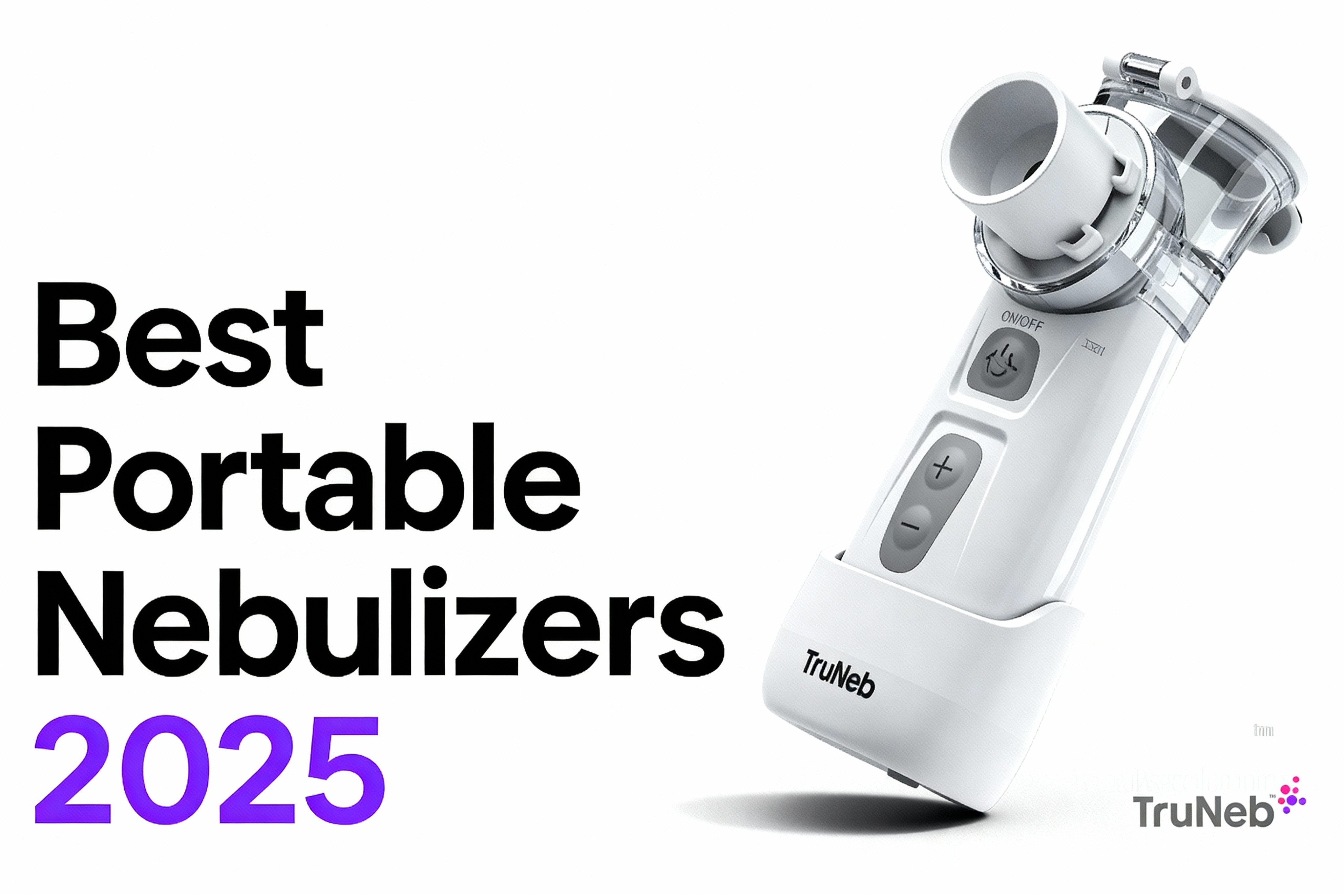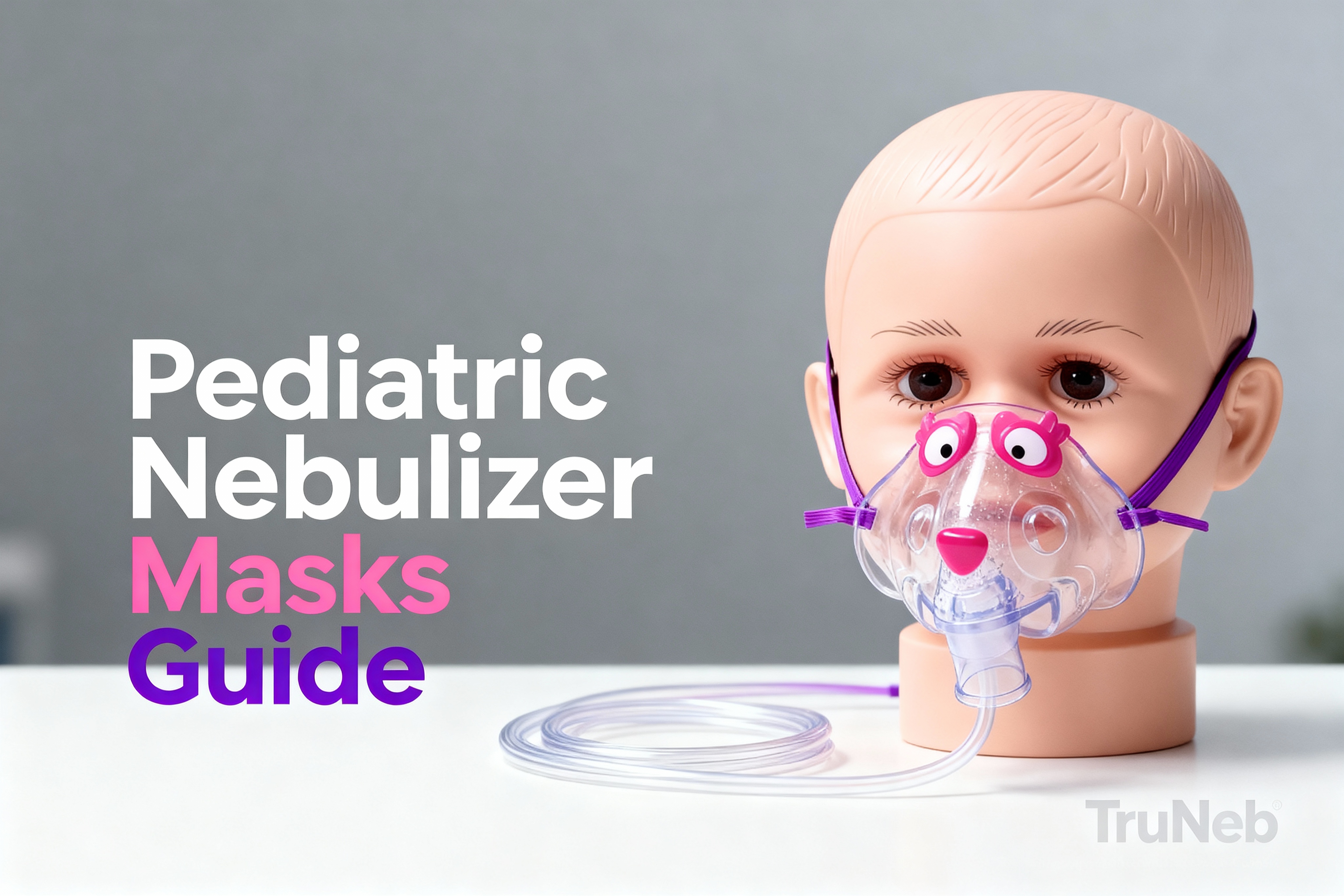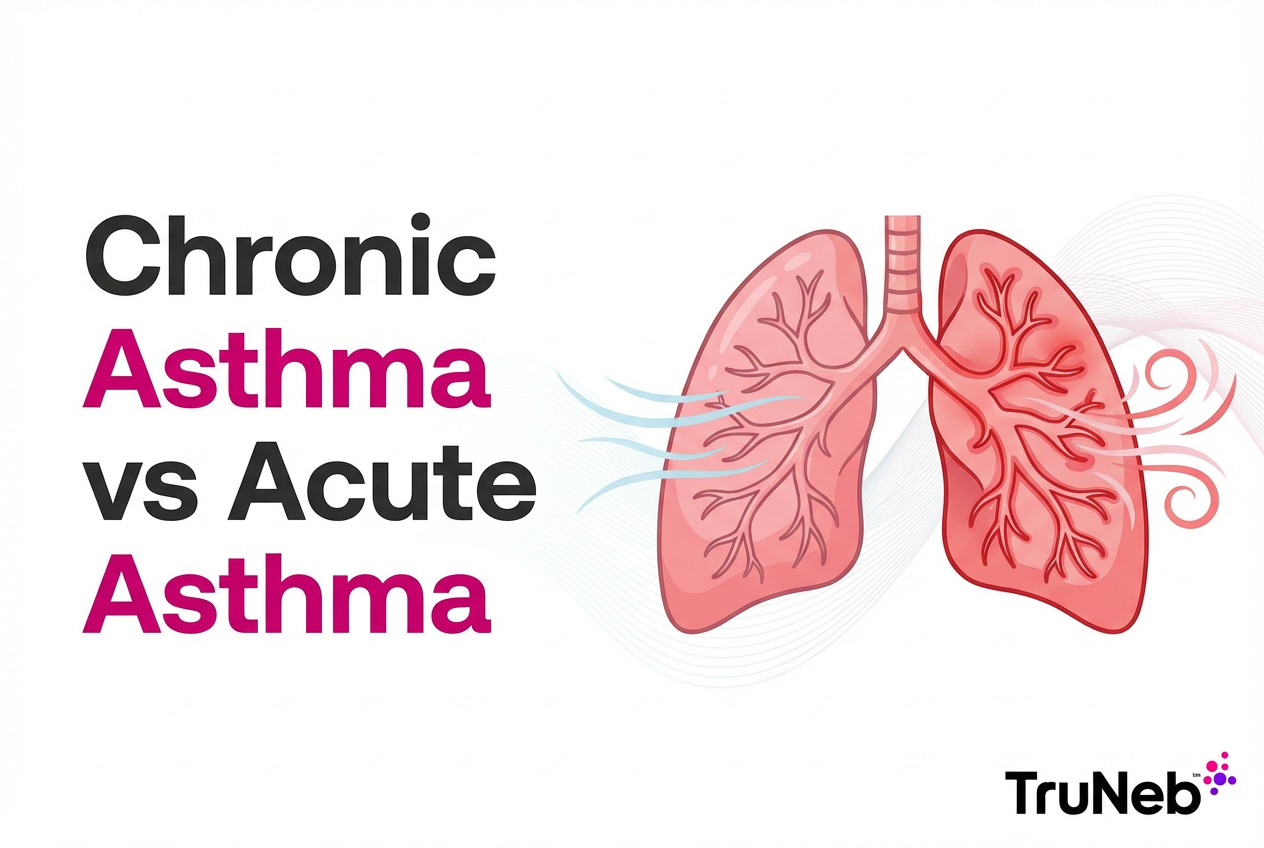On this page

What Is a Nebulizer Tubing Kit?
A nebulizer tubing kit is the set of connecting parts that links a jet (compressor) nebulizer to you. It usually includes:
- Tubing (the hose that carries air from the compressor)
- A medication cup (also called the nebulizer chamber)
- A mask or a mouthpiece
These parts work together to turn liquid medicine into a fine mist you can breathe in. Kits are sold in adult and pediatric sizes. Kits don’t include the compressor itself; they’re just the connecting parts. Note: newer mesh nebulizers don’t use tubing at all.
One-liner: A nebulizer tubing kit is the hose, cup, and mask/mouthpiece that link a compressor nebulizer to your lungs.
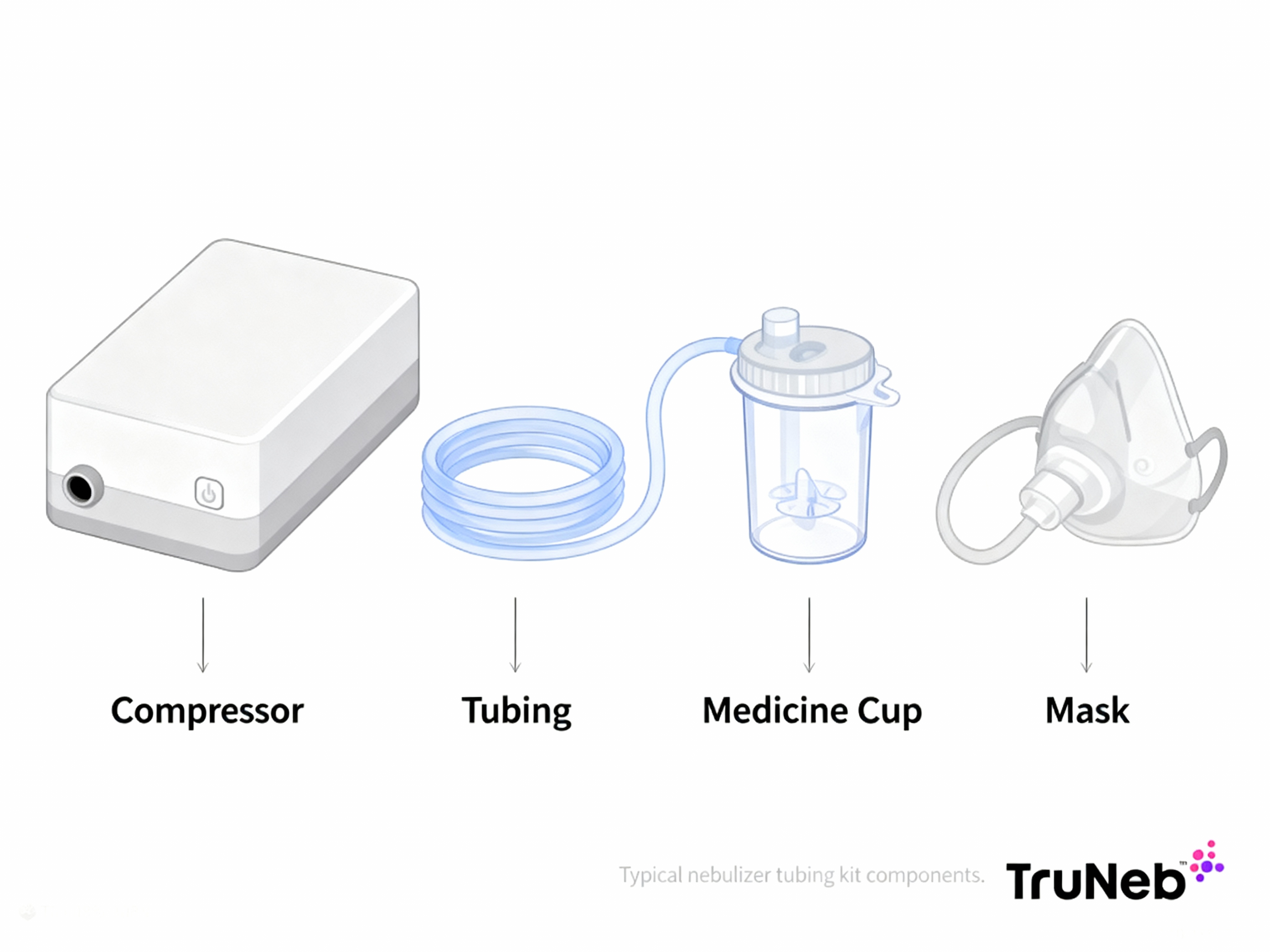
Components of a Nebulizer Tubing Kit
Nebulizer Tubing
This flexible hose connects the compressor’s air outlet to the medicine cup. Most are about 7 feet long, latex-free, and designed to resist kinks.
Medication Cup (Nebulizer Chamber)
This small cup holds your liquid medication or sterile saline. It attaches to the tubing and to a mask or mouthpiece.
Mask vs. Mouthpiece
- A mask sits over the nose and mouth. It’s helpful for younger children or anyone who can’t hold a mouthpiece.
- A mouthpiece goes between the lips. It can deliver more medication into the lungs when used with a good seal.
Some kits include a small T-piece or reservoir tube; these aren’t required for every setup.
Look for kits labeled adult or pediatric so the mask size fits well.
One-liner: A standard nebulizer tubing kit includes the tube, a medication cup, and either a mask or a mouthpiece sized for adults or kids.
Are Nebulizer Tubing Kits Universal?
For most home jet nebulizers, yes. Standard compressors and medicine cups use standard connectors, so tubing usually fits across brands. You can typically mix a generic tubing kit with machines from companies like Omron, Drive, or PARI. Always check your device manual if you’re unsure.
- Standard length is around 7 feet. Shorter 5-foot tubes reduce slack; extra-long tubes can slightly reduce airflow.
- Most reputable kits are latex-free PVC.
- "Crush-resistant" tubing helps prevent kinks.
One-liner: Most jet nebulizer tubing is universal and fits standard connectors, with 7-foot latex-free tubing common.
Where to Buy Nebulizer Tubing Kits (No Prescription Needed)
You can pick up a replacement kit at:
- Local pharmacies: Walgreens or CVS usually stock mask-and-tubing kits or can order them.
- Big-box stores: Walmart usually lists kits online, with some in-store availability.
- Online retailers: Amazon and medical supply sites carry a range of options and multi-packs.
Do you need a prescription? Not for accessories like tubing, masks, or cups. The FDA classifies nebulizer compressors as prescription devices, which is why the machine is Rx-only when billed through insurance. Accessories are generally sold over the counter. Medicine like albuterol still requires a prescription.
Heads-up: You might see boxes labeled "steam inhaler"—these aren’t nebulizers and aren’t for breathing prescription meds.
Typical price: Most kits range from about $5 to $15 depending on brand and what’s included.
One-liner: You can buy nebulizer tubing kits over the counter at pharmacies, big-box stores, and online—no prescription required for accessories.
How to Maintain and When to Replace Nebulizer Tubing
Keep your kit clean and replace parts on schedule to maintain performance and reduce germ buildup.
- Replacement schedule: Most reusable kits work best when you replace them about every 6 months with regular use. Disposable kits have shorter lifespans—replace per the instructions. Replace sooner if parts are cracked, discolored, or if treatments take longer than usual.
- Don’t wash tubing: Don’t wash the inside of the tubing. It’s hard to fully dry and can grow bacteria or mold. Wipe the outside if needed and let the compressor run for a few seconds after a treatment to blow out moisture.
- Clean other parts after each use: Per most device manuals and American Lung Association guidance, wash the mask or mouthpiece and the medicine cup with warm soapy water, rinse well, and air dry. Disinfect weekly (a vinegar solution is commonly used), if your instructions recommend it.
Wet or aging tubing increases infection risk, which is why regular replacement matters.
Bottom line: Replace tubing about every 6 months and never wash its inside; clean and disinfect the cup and mask regularly to stay safe.
Quick maintenance schedule:
| Part | After each use | Weekly disinfect | Replace timeline |
|---|---|---|---|
| Tubing | Do not wash inside; wipe exterior if needed; run compressor briefly to clear moisture | Not applicable | ~Every 6 months or sooner if cracked/discolored |
| Medicine cup | Warm soapy water, rinse, air dry | Vinegar solution if recommended | ~Every 6 months or if performance drops |
| Mask | Warm soapy water, rinse, air dry | Vinegar solution if recommended | ~Every 6 months or if straps/fit degrade |
| Mouthpiece | Warm soapy water, rinse, air dry | Vinegar solution if recommended | ~Every 6 months or if worn |
| Compressor filter | — | — | Per manufacturer (typically 3–6 months)† |
† Always follow your compressor’s manual for filter care and replacement.
Can You Use a Nebulizer With Just Saline?
Yes. People sometimes nebulize sterile normal saline (0.9% sodium chloride) to hydrate dry airways. Doctors sometimes recommend hypertonic saline (3% or 7% salt water) to help loosen thick mucus in conditions like bronchiectasis or cystic fibrosis. Hypertonic saline can prompt coughing that helps clear mucus, so start under a doctor’s guidance.
Use only sterile, preservative-free saline made for inhalation. TruNeb™ offers 3% and 7% hypertonic saline that you can buy without a prescription. Talk to your doctor about which saline strength fits your plan.
Safety note: Don’t use homemade salt water or non-sterile solutions in a nebulizer.
One-liner: Sterile normal or hypertonic saline can be nebulized for airway hydration and mucus clearance when your doctor recommends it.
Tired of Tubing? Try a Portable Tubeless Nebulizer
If juggling tubes and filters feels like a lot, a mesh nebulizer can help. Mesh devices turn liquid medicine into mist without a hose or heavy compressor. They’re small, quiet, and travel well.
The TruNeb™ Portable Mesh Nebulizer is designed for daily use. No tubing to replace, fewer parts to clean, and it’s compatible with common medications and sterile saline; check your medication’s instructions.
One-liner: Portable mesh nebulizers create mist without tubing, so there’s less to clean and carry.
Safety ReminderDon’t wash the inside of nebulizer tubing. Replace tubing on a regular schedule.Follow your device’s instructions for cleaning the cup, mask, and filters.Talk to your doctor before trying a new medication or saline strength.If you have severe shortness of breath, chest pain, bluish lips/face, or symptoms that rapidly worsen, seek emergency care right away.Talk to your doctor if your symptoms don’t improve or if you’re changing your treatment plan.
Frequently Asked Questions
Tap or click a question below to see the answer:
Most jet nebulizers use standard connectors, so universal tubing typically fits. Check your manual to be sure.
About every 6 months with regular use, or sooner if it's damaged or treatments take longer.
No. Don't wash or submerge the inside of tubing—replace it on schedule.
No for accessories like tubing and most sterile saline. Prescription medicines (like albuterol) still require an Rx.
Tubing, a medication cup, and either a mask or a mouthpiece (adult or pediatric size).
No. Steam inhalers warm and humidify air, but they aren't used to deliver prescribed breathing medications.
This information is educational and not a substitute for medical advice. Always follow your clinician's guidance.

